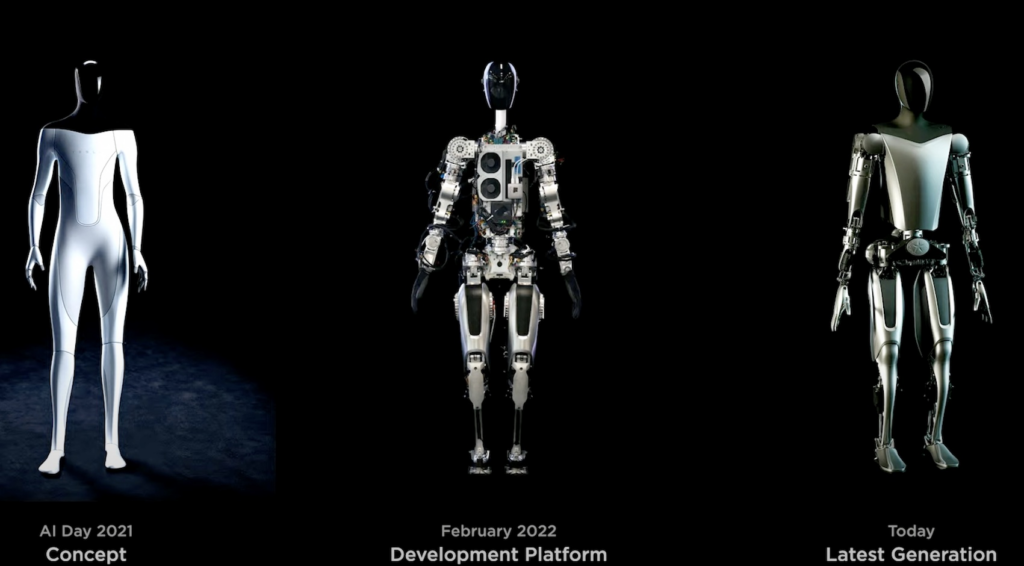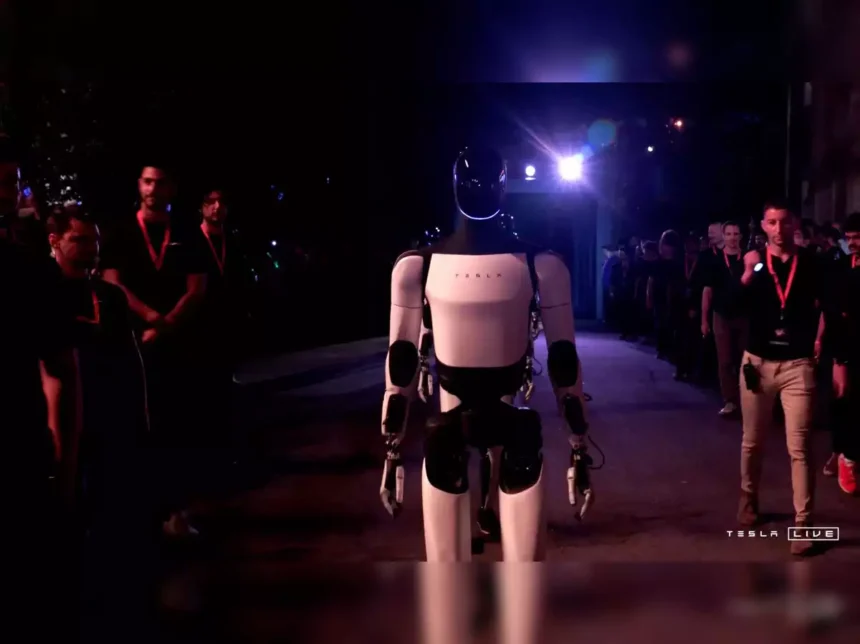Tesla’s humanoid robot, Optimus, has evolved since its initial, rather clunky debut. Elon Musk and Tesla unveiled a much more advanced version of the robot at their recent “We Robot” event. The robot’s transformation—moving from a prototype barely functioning on stage to one that interacts freely with attendees—has sparked widespread interest and debate. Musk confidently claims that the Optimus robot could become Tesla’s biggest product, suggesting an ambitious vision for widespread use of humanoid robots in everyday life.
What’s Happening & Why This Matters
Two years ago, Tesla’s Optimus prototype was little more than a collection of wires and mechanical parts struggling to function without direct control. Fast forward to the present, and Optimus is now walking untethered and engaging with people at events. Musk introduced these robots as an extension of Tesla’s established technology, noting that Optimus shares similarities with Tesla’s electric vehicles in terms of batteries, motors, and software. “It’s just a robot with arms and legs instead of wheels,” he quipped, yet the complexity of replicating human-like movements goes far beyond that of a car’s simpler mechanics.
Tesla started its development journey with a person in a robot suit—a fact Musk referenced with humor, underscoring the strides made since then. Tesla now aims to commercialize the Optimus robot with a price tag between $20,000 and $30,000, and Musk predicts rapid advances. He envisions a future where anyone can own an Optimus robot, using it for tasks like babysitting, dog-walking, grocery shopping, and even companionship. Musk believes that, eventually, every person on Earth will want one of these robots, sparking an era where services become increasingly affordable due to decreased labor costs.

How Autonomous is Optimus?
The “We Robot” demonstration showcased Optimus interacting and moving autonomously, but questions remain about its true independence. The tech community has raised concerns about the extent of Optimus’s self-governing capabilities, with many wondering if the robot’s actions are pre-programmed or controlled by external operators. Critics argue that while the technology has come a long way, Optimus may still rely on human intervention to perform more complex actions.
Added scrutiny reflects skepticism about Musk’s ambitious timeline and claims. Although Tesla has shown Optimus performing basic tasks and responding to voice commands, the leap from controlled environments to real-world autonomy represents a considerable challenge. Musk, however, believes in the eventual “age of abundance” where Optimus reduces labor costs significantly, allowing people to own a personal humanoid robot.
A New Era for Consumer Robotics?
The Optimus project represents Tesla’s expansion beyond automobiles and energy solutions, diving into consumer robotics. Tesla hopes Optimus will pave the way for an accessible, multipurpose robotic companion in households. If successful, this could transform industries dependent on manual labor and bring Tesla’s technological prowess directly into homes worldwide.

Tesla’s Optimus robot hints at a future where humanoid robots become a common sight. However, the road to mainstream adoption will require overcoming technical and ethical hurdles, including safety, privacy, and autonomy concerns.
TF Summary: What’s Next
Tesla’s Optimus project marks a shift into consumer robotics, potentially setting the stage for widespread adoption of humanoid robots. While Optimus’s autonomy remains a topic of debate, Musk’s vision for a world where personal robots handle daily chores and tasks could redefine human-machine interaction. Future developments will reveal whether Tesla can bridge the gap between the current capabilities of Optimus and Musk’s grand vision. As the technology matures, Tesla will face the challenge of refining Optimus’s capabilities and proving its real-world viability.



